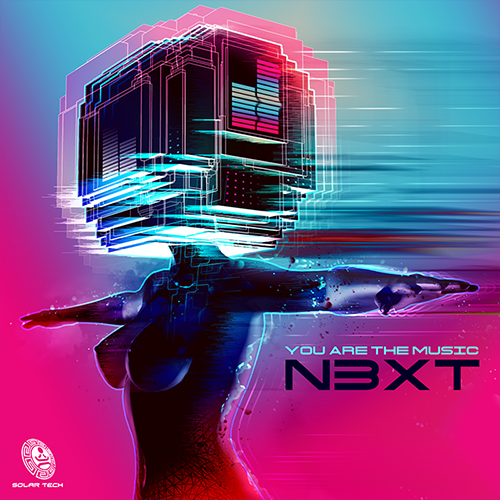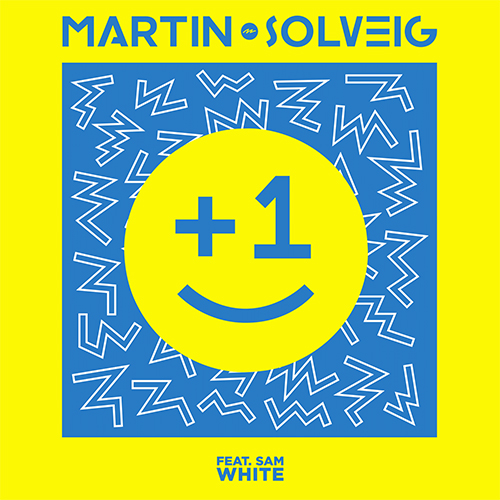-
 play_arrow
play_arrow
Clubalicious Clubalicious Radio
-
 play_arrow
play_arrow
London Calling Podcast Yana Bolder

In the late ’70s, there were all sorts of bands lumped under the broad label “new wave,” which usually implied the groups were forward-thinking (rather than rooted in ’60s rock or self-indulgent “progressive” sounds), played short songs (” Death to drum solos!”) and drew at least some energy and inspiration from the punk movement. Bands as diverse as The Stranglers Tom Petty & the Heart breakers, Blondie, Elvis Costello & The Attractions, Talking Heads, Mink De- Ville and Richard Hell & The Voidoids were tagged as new wave—the style ran the gamut from bubbly, commercial-sounding power-pop to noisy, angst-filled ravings. The Cars were basically supreme pop-meisters with an unfailing commercial sense, yet in their look and their sometimes edgy musical approach, they definitely owed much to the new wave. Though considered a Boston band because they broke out of that city, The Cars have roots in the Midwest: Ric Ocasek, the band’s rhythm guitarist and principal singer and songwriter, and bassist/ singer Ben Off hooked up in Cleveland nearly a decade before The Cars were formed.
Ocasek had dropped out of college to be a musician, and Orr was already gaining experience as a session musician and sometime producer. They played together in a number of different bands based in different cities, ranging from a folk trio called Milkwood (which cut an album in the early 1970s) to various rock aggregations. The peripatetic twosome eventually settled in Cambridge, Mass. Once settled in the Boston area, they hooked up with keyboardist Greg Hawkes, who’d worked with Martin Mull and the Boston band Orphan; guitarist Elliot Easton, who first played with Ocasek and Orr in a group called Cap ‘n Swing; and drummer David Robinson of the proto-new wave band the Modern Lovers. The quintet became known as The Cars in late 1976 and played their first gig in Boston on New Year’s Eve of that year.
In February of ’77, they began playing regularly at Boston’s seedy but important Rat Club, where they were “discovered” by their first manager, Fred Lewis. Shortly after that, the group cut a demo tape of some of Ocasek’s songs, including “My Best Friend’s Girl,” “Good Times Roll” and “Just What I Needed”; that last tune found its way onto the playlists of two local FM stations, and all of a sudden there was a big buzz about the group. Lewis managed to land the band slots opening for such late-70s powerhouses as Bob Seger, Foreigner and the J. Geils Band. After a headlining gig at College of the Holy Cross near Boston in November ’77, The Cars were signed by Elektra Records, and in early 1978, the group was shipped to England to cut its first album with one of the hottest British producer/engineer teams of that era, Roy Thomas Baker and Geoff Workman, who were riding high after their work with Queen and Journey.
Workman remembers, “I came over to the United States in 1977 to work with Roy on a Journey album, and after that, Roy and I struck up a relationship where we worked on a load of albums together. After we made that Journey record, we went back to London because our next project was going to be a Patti LaBelle album at Air Studios—George Martin’s place. We booked time there and presumably everything was going according to plan. At the last minute, there was some problem between the British musicians’ union and her, where she had wanted to bring her whole band over, but they wanted her to use a number of British musicians or something— some weird ruling that’s probably off the books now. At any rate, the project was put on hold and then Roy got a call from Elektra New York saying, ‘We’ve just signed a brand-new band out of Boston called The Cars—would you he interested in producing them?’ And Roy said, ‘Well, I’m not really that aware of them.’ So Elektra sent over their demo tapes and Roy liked what he heard, so he agreed to make the record. We ended up using the time that was booked for Patti LaBelle”
According to Workman, the now-defunct Air facility “was on the third or fourth floor of a building overlooking Oxford Circus. It was a fully professional place, very well-equipped and maintained. Actually, it was while we were doing The Cars’ album that George [Martin] was coming around and asking Roy and me about equipment, because that’s when he was trying to put Air Montserrat together. He was saying, ‘You guys work in America—what kind of equipment do American engineers and producers like?”
The Cars album was cut in Studio 3 at Air, which was one of the smaller studios there. (At the time, the big studio down the hall was occupied by Kate Bush, who needed a full orchestra for her own first-album sessions.) The control room was equipped with an 8000 Series Neve console and Tannoy Gold monitors, but instead of using the studio’s multitrack, “we used a Stephens 40-track 2-inch machine that was shipped over in flight cases from Los Angeles,” Workman says. “This was the machine we’d done the Infinity album on with Journey. I remember people would say, ‘A 40-track machine?! You’ve got to be kidding!’
“Of course, back then you usually didn’t fill the 40 tracks, but it gave you the availability to do your background vocals—your three roots, your three thirds, your three fifths—on nine separate tracks and not be obliged to mix them down on the spot. You could come back in the cold light of day with a fresh ear, and then bounce them. Same with guitar parts. If you’re doing three-part guitar harmonies, like we did with Brian May [of Queen] and Neal Schon [of Journey], you had the tracks for it, and you could leave them there until the last minute, until all the overdubs were on so you could make sure everything—the vocals and guitars— would be correct within the track. Sometimes if you sit them in the track too early, by the time you’ve added everything else on, you start to lose little things—like the third in that harmony— but it’s too late; you bounced it down.”
Workman recalls that The Cars were a highly professional outfit who knew their songs very well and were always cooperative. “It think they flew in on a Monday morning and we were setting up stuff Monday afternoon,” he says. “Roy and I both met them for the first time at the studio, which was not the way we usually worked. The beauty of this album is that we recorded it in nine days and then took 11 days to mix it because there are a lot of crossfades and little effects. We were working 10 in the morning ’til 6 in the evening—banker’s hours—but because they knew the songs so well, it went very smoothly. The basic tracks had everyone playing together, but for the most part we only kept the drums and bass and then replaced the other parts.”
Workman says that Air featured a fine complement of mics, including many old Neumann and AKG models. Ben Orr’s bass and Greg Hawkes’ keyboards were DI’d, with Hawkes setting up his rig of keyboards in the control room. “He was really into the old, funky keyboards,” Workman says. ” He had a Vox Continental and a Farfisa and a little old Moog [which is prominent on “Just What I Needed”]. He had all these instruments that looked like they’d come out of thrift stores, but he got these really interesting sounds out of them. Other people were experimenting with Oberheims and these other keyboards that you practically needed a programmer for, but Greg would just plug in and play. He was very fast in the studio—he always knew what part a song needed. Same with [guitarist] Elliot Easton. I remember when it came time to do overdubs and Elliot came in, we said, ‘What songs do you want to try today?’ and he said, ‘I’ll do ’em all!’ He had really worked these things through in his mind and arrived at the solos he wanted, and that’s what he played.”
Queen, Cars Producer Roy Thomas Baker Passes at 78
Though Baker had earned something of a reputation for grandiosity in his productions because of his work with Queen, Workman notes that with The Cars, the intention was always “to keep that stripped-down sound they had, but finesse it a little. If you listen to songs like ‘Good Times Roll’ and ‘My Best Friend’s Girl,’ they actually have huge background vocals, but we kept them back within the track so you don’t notice it so much. They weren’t meant to be the major point of the song. I think that sort of thing was part of the idea of hiring Roy and me. A lot of what we were doing were things having to do with the presentation of the material— little embellishments, harmony ideas, that sort of thing.
“When you talk about The Cars’ first album, aside from the actual songs, the thing most people remember is that ‘chick-chick-chick’ chuggy guitar sound. How that happened is when we were cutting the bed tracks, we had to put either Ric Ocasek’s or Elliot Easton’s guitar amp in the doorjamb—from the corridor to go into the studio area there was a little space, like an airlock, and we put one of the amps in there on its back and put a mic up in the air there; that was our iso booth. We were finding any little areas where we could finagle stuff away, so we wouldn’t get bleed onto the drum mics. But the sound we got from that little amp in that small area was great and we used it a lot.”
 “Just What I Needed,” with Ben Orr, rather than Ocasek, on lead vocals, was the first track the group recorded at Air, and also one of the simplest tunes on the album. The approach was to make every element as crisp and clear as possible, keeping the bass and drums punchy and effect-free and letting the slashing guitars propel the tune. The stacked backing vocals do recall Queen ever so slightly, but less on this track than some others. Greg Hawkes’ memorable synth solo dominates the end of the song.
“Just What I Needed,” with Ben Orr, rather than Ocasek, on lead vocals, was the first track the group recorded at Air, and also one of the simplest tunes on the album. The approach was to make every element as crisp and clear as possible, keeping the bass and drums punchy and effect-free and letting the slashing guitars propel the tune. The stacked backing vocals do recall Queen ever so slightly, but less on this track than some others. Greg Hawkes’ memorable synth solo dominates the end of the song.
Workman says that the greatest challenge on the album was mixing it, because of the complexity of the vocal arrangements and various ornamental touches, from imaginative Syndrum textures to multiple keyboard sounds. “We’d do a thing where we’d send a gated snare drum through a couple of little Auratone speakers and we duct-taped a couple of Synare pads on top of the Auratones so every time the snare popped, the air movement out of the Auratone triggered the Synare. We were always experimenting.”
The first three songs Workman and Baker mixed for the album ended up being the first three Cars singles, and all were medium-sized hits: “Just What I Needed” made it to Number 27, “My Best Friend’s Girl” reached Number 35 and “Good Times Roll” got as high as Number 41. Beyond their success as singles, however, those songs and a couple of others (“You’re All I’ve Got Tonight” and “Bye Bye Love”) garnered an enormous amount of FM airplay, and The Cars’ debut album went on to become one of the biggest success stories of 1978-79. The group was voted Best New Band in Rolling Stone, but they were beaten out for that title at the Grammys by A Taste of Honey. The Cars stayed on the Billboard charts for nearly three years after its release.
Though many feel that The Cars never made another album as good as their first, their popularity actually rose with subsequent releases, including Candy-O (which again teamed Baker and Workman), Panorama, Shake It Up (both produced by Baker, but with other engineers) and the Mutt Lange-produced Heartbeat City. The group broke up in 1988, but the hooks will never fade away.
This article first appeared in the April, 1998 issue of Mix.
Written by: Admin
Similar posts
Recent Comments
No comments to show.Featured post

Latest posts
Current show
Upcoming shows

The House Crunch
Terri B
19:00 - 20:00
In The Mix
Tony Kay
20:00 - 21:00
Fresh Is Fresh
THIS WEEKS HOTTEST DANCE RELEASES FROM DEE JAY PROMOTIONS
21:00 - 00:00
Sugar Radio
Robin Schulz
00:00 - 01:00
Redolent
01:00 - 02:00
Chart













